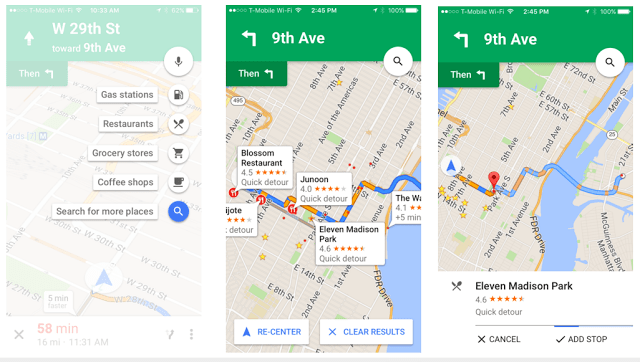
Last fall, Google announced the addition of a long-requested feature to Google Maps, which allowed users to — finally! — add a stop along their current route. That way you could route your way to a gas station or restaurant ahead of your final destination. However, at launch, the feature was only available on Android devices. Today, Google says the feature is now available on all iOS devices as well, and is available in any country where Google Maps offers navigation — or more than 100 countries worldwide.
The feature itself is something users of the Google-owned navigation app Waze have had for some time, but was not yet available in Google Maps.
It’s surprising that it took Google so long to add such a basic feature to its navigation app. After all, hitting up a pit stop while on your way somewhere else is the norm — but, before, you would have to route your way to the pit stop, then start a new route from the pit stop to your destination. And by creating two navigation sessions, it could be hard to see which gas station, restaurant or other stop would incur the least amount of extra driving.
Using the new “add a stop” option is fairly simple: while you’re in navigation mode, you’ll see a magnifying glass at the top-right of your screen that, when pressed, offers a variety of options for the type of places where you might need to stop, including gas stations, restaurants, grocery stores or coffee shops. You also can search for more places, e.g. to enter a pit stop of your own choosing.
For safety’s sake, you can access the feature by way of voice commands by tapping the microphone button instead of typing. That will make using the option quicker and easier when you’re behind the wheel. (Of course, you should not be fiddling with your phone while driving, but many still do.)
As you view your options plotted on the map, Google Maps will display the rating for each destination, as well as the estimated time the detour will take, so you can make the best selection.
The feature was already live on Android, but is today rolling out to iOS users worldwide, says Google.

Comments
Post a Comment